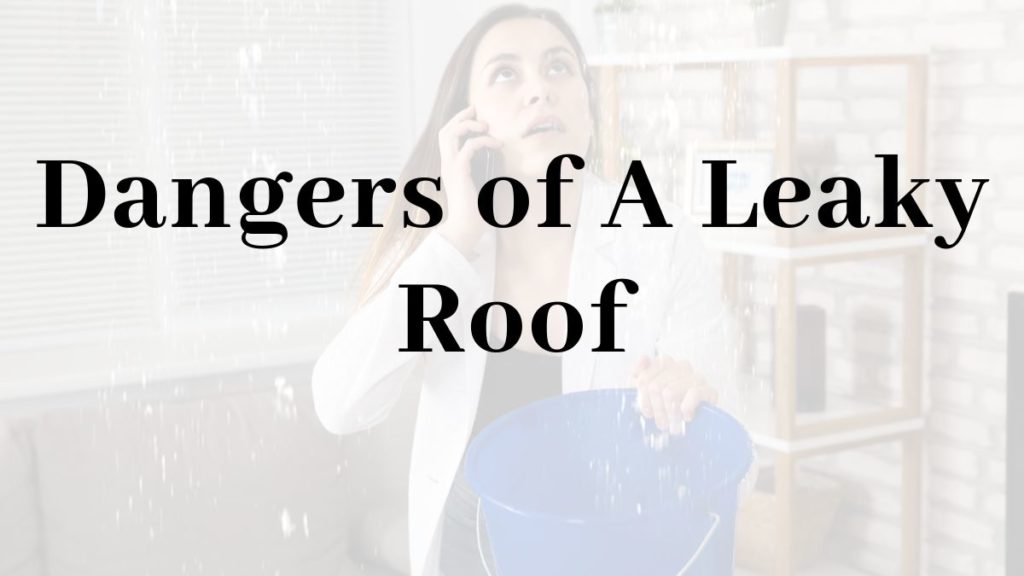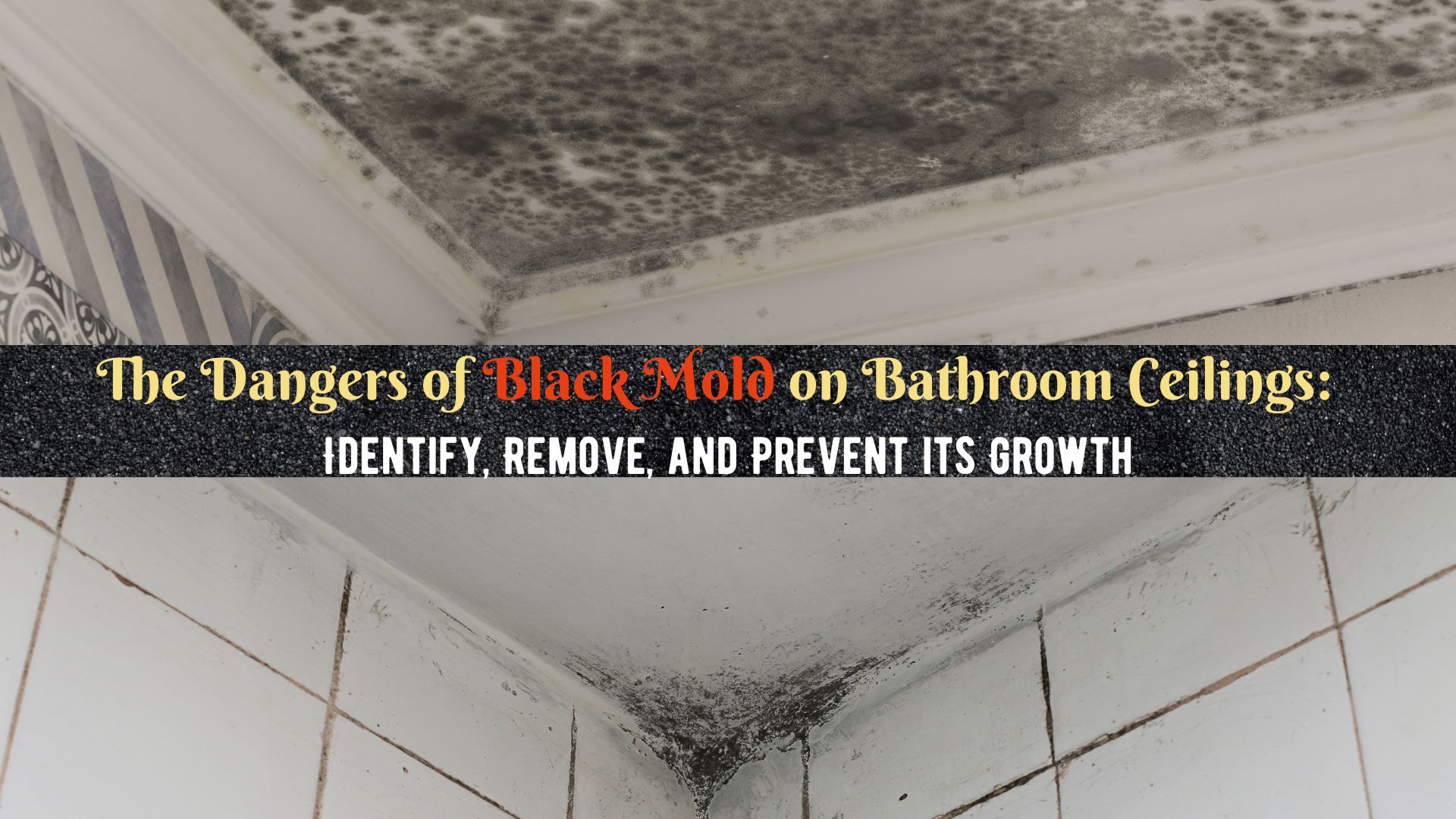Dangers of a Leaky Roof

Water damage is a serious business, so you should always be on the lookout for a leaky roof before it can ruin your property and endanger your safety.
Oftentimes, a leaky roof is taken for granted, as many homeowners think that it is only structural damage. However, a roof leak can pose a danger and ruin your safety. Constant water intrusion will penetrate your attic and make its way down to your home’s foundation. Thus, causing more serious water damage and costly repairs.
Below are some less obvious ways a roof leak can affect your home.
1. Damage to Ceiling and Attic
These are the areas of your home where you can easily see signs of damage to your roof. The initial dangers of a leaky roof are damage to your attic and the items kept there. If there is no attic and if the size of the leak is really big, it can make its way and start damaging the interior of your ceiling.
You can expect several things to happen when the leak starts to travel on the ceiling, such as; the paint will darken, the plaster might expand and bubble, the paint, and plaster on nearby walls will also get affected and can even damage the ceiling-mounted lights and fans.
2. Higher Utility Bills
Water can also affect your energy consumption. When the water has its way of intruding on your attic, it can damage the insulation. Saturated insulation cannot perform its function properly, and drying it takes a lot of time. If the roof leak is left untreated for a long time, your insulation can become depleted, and it will be hard to maintain your desired temperature.
Thus, your home will consume more energy, increasing utility bills.
3. Mold and Mildew Growth
If the repair of a leaky roof is put off for a long time, it can cause mold and mildew growth. Mold and its spores can travel and spread throughout your home’s structure, to your HVAC system, and to the other areas of your home, passing through your vents and eventually landing on your carpet, furniture, and clothing. Mold can do a lot of harm. It can invade and damage your wood framing, wall and floor coverings, and ceiling tiles.
Moreover, mold can pose serious health hazards, especially to those who are sensitive to it. According to the U.S. Environmental Protection Agency, some illnesses that can develop from being exposed to mold are nasal congestion, asthma, rhinitis, and inflammation. Mold is difficult and risky to deal with; thus, treating it can be very costly.
4. Fire Hazard
If electrical wiring is in your attic or ceiling, water from a leaky roof might lead to a fire threat due to a short circuit. It is highly recommended to turn off the electricity in the affected area and call in professionals to inspect any potential danger.
5. Compromising Structural Integrity
A leaky roof can damage ceiling joints, rafters, wall framing, exterior trim, and fascia boards. A long-term and consistent roof leak can deteriorate and weaken the wood and rotten roof framing. These side effects of a leaky roof may require assistance from professionals, and the repairs can be costly.
Signs of a Leaky Roof: How to Identify and Fix Small Roof Leaks
A leaky roof can be a homeowner’s worst nightmare, causing water damage, structural damage, and damaged ceilings. Fortunately, there are several signs you can look out for to identify a leaky roof before it becomes a major problem.
- Inspect Your Attic Insulation and Fascia Board
One of the first places to check for signs of a leaky roof is your attic. Look for water stains on the ceiling or walls and inspect your insulation for signs of moisture. If your insulation is damp, it’s a clear indication that water is getting in through the roof. You should also check your fascia board, which is the wooden board that runs along the edge of your roofline. If it’s damaged or rotted, it could be a sign of water damage.
- Check Your Roof Vents and Shingle Roof
Another place to check for signs of a leaky roof is your roof vents. These are the pipes or ducts that allow air to circulate in your attic. If they’re damaged or not properly sealed, they can allow water to seep in. You should also inspect your shingle roof for signs of damage, such as cracked or missing shingles. If you see any signs of wear and tear, it’s important to fix them right away to prevent water from getting in.
How to Fix a Leaky Roof: Roof Cement and Roof Leak Repair
If you’ve identified a small roof leak, there are several ways to fix it. One option is to use roof cement, which is a thick, tar-like substance that can be applied to the damaged area. You can also use a roof leak repair kit, which typically includes a sealant and patching material. These products can be found at most hardware stores and are easy to use.
When to Call a Professional
A leaky roof can cause serious water damage if left untreated. By knowing the signs of a leak and how to fix it with roof cement, roof leak repair, or a roofing contractor, you can prevent water damage and structural damage to your home. So be vigilant, inspect your roof regularly, and don’t hesitate to take action if you spot a problem. Moreover, look for reputable roofing companies in your area and ask for references before hiring a contractor.
And if you are dealing with water damage due to a leaky roof, let Superior Restoration professionals deal with it to ensure that your property is back in its pre-state condition. Please contact Water Damage Corona today.




